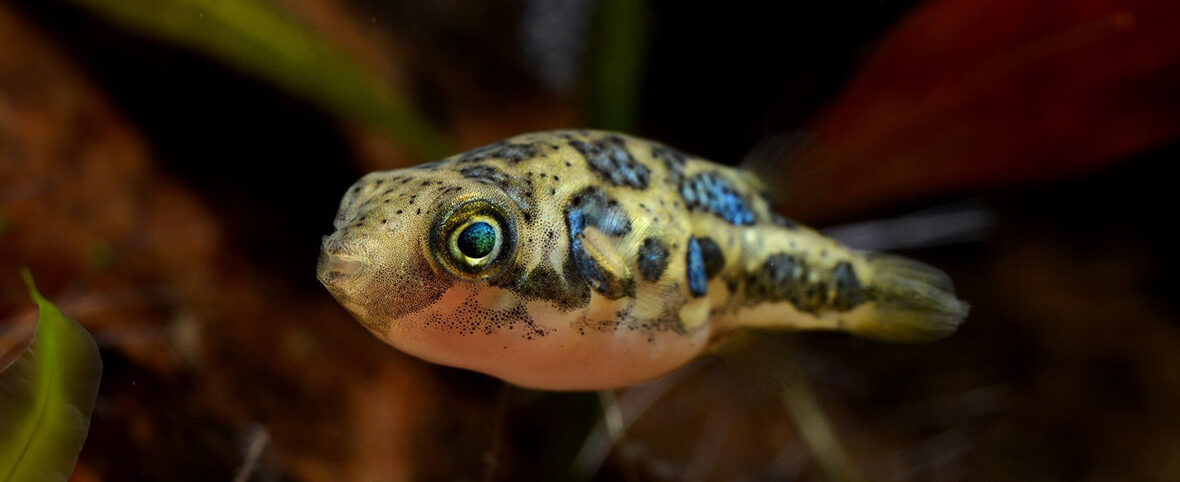
Welcome the world’s smallest pufferfish, the pea pufferfish, aka Malabar pufferfish, pygmy pufferfish, dwarf pufferfish, or pea puffer. These freshwater puffers hail from the lakes, estuaries, and rivers of Kerala and southern Karnataka in the Western Ghats of Peninsular India. Unfortunately for these cute little critters they are subjected to the threats of overfishing, over-collection for the pet trade, habitat destruction at the hands of dams, and water pollution. The IUCN lists these diminutive fish as Vulnerable, and their numbers are decreasing.
First the Stats…
Scientific name: Carinotetraodon travancoricus
Weight: Up to .035 ounce
Length: Up to 1.37 inch
Lifespan: Up to 5 years
Now on to the Facts!
1.) These are the only known pufferfish to dwell in large shoals.
2.) They were first discovered in 1941 by S.L. Hora and K.K. Nair and named Monotretus travancoricus. But they were later renamed Carinotetraodon travancoricus in 1999 by R. Britz and M. Kottelat.
3.) Sexual dimorphism exists within this species of pufferfish in that females are larger than males, and males tend to have brighter colorations than females, with an abdominal stripe. Females tend to be rounder than males.
4.) Just like all puffers, these little critters can inflate their bodies with water, or air – if necessary. However, inflating causes undue stress, and inflating with air can be lethal.
5.) They eat insect larvae, crustaceans, snails, small worms, daphnia, and copepods.
But wait, there’s more on the pea pufferfish!
6.) Females lay up to 5 eggs among the aquatic vegetation, or directly on the substrate.
7.) The eggs hatch in up to 5 days, after which time the fry will survive on their yolk sac for up to 4 days. Then they will begin searching for food.
Did you know…?
Dwarf pufferfish, just like many other puffers, produce tetrodotoxin, which is a highly lethal neurotoxin which has no cure.
8.) The hatched larvae are a mere 0.124 inch in length.
9.) Their neurotoxin is produced in the glands of the epidermis (surface layer of the skin), ovaries, and the liver.
10.) Dwarf pufferfish have become immensely popular in the aquarium trade due to their small size, adorable puppy dog faces, large eyes, bright coloration, and curious behaviors.
11.) While these tiny critters can breed in captivity, it is difficult to get them to do so and thus most of the specimens found in fish stores are wild caught. Wild caught specimens always need to be dewormed, as they tend to have parasites.
Now a Short Pea Pufferfish Video!
Be sure to share & comment below! Also, check out the Critter Science YouTube channel. Videos added regularly!
Want to suggest a critter for me to write about? Let me know here.
Some source material acquired from: Wikipedia & IUCN



